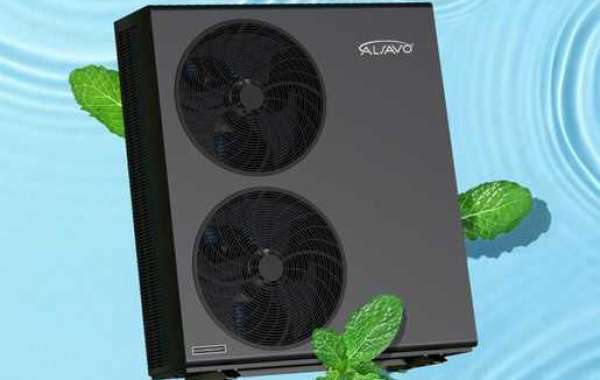The demand for sustainable energy solutions has been increasing, and heat pumps have emerged as an efficient and eco-friendly solution in the field of HVAC. Heat pumps use a small amount of electrical energy to transfer heat from one location to another, making them highly energy-efficient. In this article, we will discuss the working principle, composition, classification, and characteristics of heat pump systems, with a special focus on air-source heat pumps.
Working Principle of Heat Pumps
Heat pumps operate on the principle of the refrigeration cycle. The refrigeration cycle involves four basic components: compressor, evaporator, condenser, and expansion valve. The refrigerant is compressed by the compressor, which raises its temperature and pressure. The high-pressure refrigerant is then passed through the condenser, where it releases heat to the surrounding environment and condenses into a liquid. The liquid refrigerant then passes through the expansion valve, where it is allowed to expand, resulting in a drop in pressure and temperature. The low-pressure refrigerant then passes through the evaporator, where it absorbs heat from the surrounding environment and evaporates into a gas. The gas refrigerant is then compressed again by the compressor, and the cycle continues. Composition of Heat Pumps
Heat pumps consist of four main components: compressor, evaporator, condenser, and expansion valve. In addition to these components, heat pumps also have a reversing valve that allows them to switch between heating and cooling modes. The reversing valve switches the direction of refrigerant flow, allowing the heat pump to absorb heat from the outside air during the heating mode and release heat to the outside air during the cooling mode.
Classification and Characteristics of Heat Pump Systems
Heat pump systems can be classified based on their heat source: air, water, or ground. The air source heat pump(ASHP) is the most commonly used type of heat pump system. ASHP uses the outside air as their heat source, making them easy to install and cost-effective. ASHP is also highly efficient, with a coefficient of performance (COP) of up to 4.0, meaning that for every unit of electricity used, four units of heat are produced.
ASHP are also characterized by their heating capacity, which is measured in kilowatts (kW). The heating capacity of an ASHP depends on the outdoor temperature, with the capacity decreasing as the temperature drops. However, recent advancements in technology have led to the development of high-performance ASHPs, such as the Alsavo INVERBOOST, which can provide efficient heating even at shallow temperatures.
Best air source heat pump manufacturers
When it comes to choosing an air source heat pump, it is important to select a reliable and reputable manufacturer. Some of the best air source heat pump manufacturers include Daikin, Mitsubishi Electric, LG, and Panasonic. These manufacturers offer a range of high-performance and energy-efficient heat pumps that are designed to meet the needs of different types of buildings.  best air source heat pump manufacturers
best air source heat pump manufacturers
One of the leading air source heat pump producers is Alsavo. The company specializes in the development and production of high-performance heat pumps, including the Alsavo INVERBOOST. The INVERBOOST is a premium air-to-water heat pump that is designed to deliver maximum efficiency and performance. The INVERBOOST features a unique inverter-driven compressor that allows it to maintain its efficiency even at extremely low outdoor temperatures.
Extremely low outdoor temperatures can have a significant impact on human health and safety, as well as on infrastructure and the environment.
For humans, exposure to extremely low temperatures can lead to hypothermia, frostbite, and other cold-related illnesses. To prevent these conditions, it's important to dress warmly and in layers, stay dry, and limit exposure to the cold as much as possible.
In terms of infrastructure, extremely low temperatures can cause pipes to freeze and burst, power outages, and other issues. It's important to take preventative measures such as insulating pipes and taking steps to keep buildings warm.
Finally, extremely low temperatures can also have an impact on the environment, such as causing bodies of water to freeze over and affecting plant and animal life. It's important to be aware of the potential impact and take steps to minimize any negative effects.










